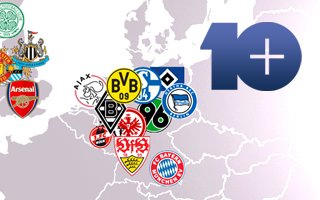St. Jakob-Park (Joggeli)
| Capacity | 36 000 |
|---|---|
| Country | Switzerland |
| City | Basel |
| Clubs | FC Basel 1893 |
| Inauguration | 15/03/2001 (FC Basel – Lausanne Sports, 0–0) |
| Construction | 13/12/1998 – 03/2001 |
| Renovations | 2006, 2009 |
| Cost | app. CHF 250 million |
| Design | (2006 refurbishment) Herzog & de Meuron |
| Design time | 1999, 2006 |
| Address | St. Jakobs-Strasse 395, 4052 Basel, Switzerland |
Advertisement
St. Jakob-Park – stadium description
Built in south-eastern Basel, the Saint Jakob stadium is currently Switzerland’s largest football ground. Its name comes from St. Jakob an der Birs village from the 11th century, while many locals call it simply Joggeli (local dialect for “Jake”).
The stadium’s history as a sports ground begins in 1919, but construction of first grandstands began in 1937. It was then stopped by WWII until 1948. At that time Switzerland was announced the host of 1954 World Cup, seeing St. Jakob Stadion as one of hosts with its large 56,000 capacity (though only 8,200 seated).
Unfortunately after the tournament the stadium proved far too big for regular demand and local teams weren’t keen on playing there. It was mostly used by FC Concordia (disbanded in 1998), but due to vacant dates it also hosted greyhound races, athletics and concerts, with only a handful of major football games, some including the growing FC Basel.
Decision to demolish the outdated stadium and replace it with a new one was made in 1990, but it took until 1996 for the project to be approved. Demolition began in 1998 and by 2001 the new football-specific stadium was ready. With double-tiered stands it could hold over 32,000 people and was opened with FC Basel as long term tenants.
Due to plot constraints the stadium was built along the west-east axis. It was designed by Herzog & de Meuron, local architects who later became famous for their iconic stadiums. This one was the first to have its entire façade illuminated at night in the form of a mosaic. Covered by synthetic scales (some opening for better ventilation) it’s neutral by day and comes alive at night. A large office/residential building was created along the south stand, hiding the stadium visually.
Only major expansion to date came in 2007, when the ground’s north side had a third tier added, nearly reaching railway tracks running nearby. Capacity grew to just under 40,000 as the stadium was to host Euro 2008 games.
Advertisement
Pictures

18.10.2008 © Sven Scharr (cc: by) 
22.11.2020 © Remo Buehrer 
19.10.2009 © ritsch48 
17.05.2009 © John Coulthard 
31.03.2009 © ritsch48 
08.01.2014 © Werner Kast 
14.06.2009 © Achim Hepp (cc: by-sa) 
24.08.2015 © Bubulonis Aper 
06.11.2013 © 74-ant-ma (cc: by-nc-nd) 
22.02.2012 © Luca-bs (cc: by-sa) 
22.02.2012 © Luca-bs (cc: by-sa) 
14.06.2009 © Achim Hepp (cc: by-sa) 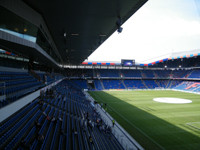
09.08.2009 © Groundhopping Merseburg 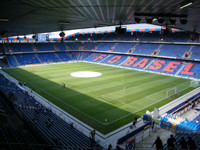
09.08.2009 © Groundhopping Merseburg 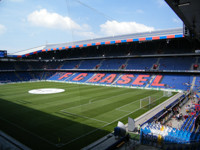
09.08.2009 © Groundhopping Merseburg 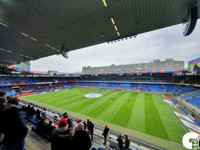
03.04.2022 © Grenzenlos Groundhopping 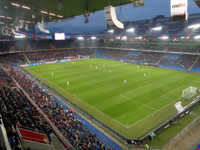
30.04.2016 © MM Groundhopping 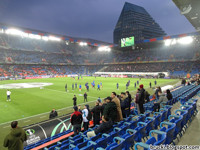
17.03.2022 © brucki.blogspot.com 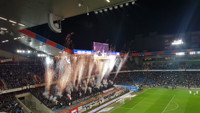
27.01.2024 © Die Sportplatzgänger 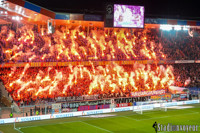
20.10.2022 © Stadionvoyeur 
22.02.2012 © Luca-bs (cc: by-sa) 
© baselunited.ch 
© baselunited.ch 
© baselunited.ch 
© baselunited.ch 
28.08.2002 © groundhopping.de 
28.08.2002 © groundhopping.de 
© swissgrounds.ch 
© swissgrounds.ch 
© swissgrounds.ch 
© swissgrounds.ch 
© swissgrounds.ch 
© swissgrounds.ch
2001–2007:
Related news
2025
-
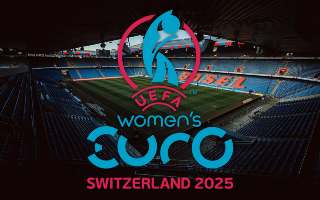
Switzerland: Women’s Euro 2025 stadiums and cities
The UEFA Women’s Euro 2025 will be the 14th edition of the championship and will take place from July 2 to 27. This will be the third tournament featuring 16 national teams. The defending champions are England, who won the title in 2022. Here’s a quick guide to the tournament.
-
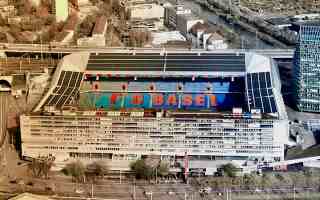
Switzerland: Will the Stadion+ Project finally speed up?
St. Jakob-Park Stadium Cooperative (GSS) and the Swiss Federal Railways (SBB) have found a solution regarding the expansion of Joggeli and the railway tracks. The plan to shift part of the fan flow to the S-Bahn station Dreispitz aims to relieve the station at the home stadium of FC Basel.
2023
-

Women's EURO 2025: Discover the stadiums of the Swiss tournament
In April this year, the host of the Women's European Football Championship, which will take place in 2025, was announced. Switzerland received the most votes among UEFA delegates, beating a combined proposal from the Nordic countries, Poland and France. Explore the 8 Swiss stadiums that will host the Women's Euro in two years' time.
-

EURO 2025: The tournament host has been chosen
Several nations competed against each other for the role of EURO 2025 women's host. Despite high hopes for a football feast in each of them, Switzerland was chosen. It is there that the tournament will be held in 2 years.
2022
-

EURO 2025: The Swiss to host the women’s tournament?
The Swiss Football Federation has officially expressed its desire to host the prestigious event. However, it must deal with competition, as UEFA has previously received proposals from other representatives of the Old Continent.
-

Switzerland: St. Jakob-Park to undergo an upgrade!
FC Basel's home ground will be redeveloped after more than 20 years since it was built. The architectural concept for the modernisation was prepared by the same studio responsible for the St. Jakob-Park design, Herzog & de Meuron. Work is not expected to begin until the second half of this decade.
-

Euro 2025: Race to host the women’s tournament heats up
Four bids are currently in the competition to become the women's Euro 2025 host. Looking at the whole process, at least one trend seems to be emerging: joined bids. Similarly to the competitions to host men’s Euro 2028 or World Cup 2030, that are shaping up, potential organisers are eager to welcome big tournaments but also look for ways to keep the costs down by joining forces.
2015
-

Euro Qualifiers: England, Poland and Germany on top
Perhaps surprisingly, the three most-supported national teams during Euro 2016 qualifiers were England, Poland and Germany. In that order! Italy and Spain left well behind, while Austria strived.
-
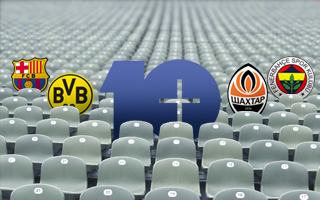
10+ Ranking 2015: Attendances in Europe (Part 2. The Clubs)
Borussia, Barca and Man United – lovely dominant trio. But it wasn’t them who gained most fans last season. Check all 217 clubs that draw an average crowd of 10,000+!
2014
2013
-

Euro 2020: All you need to know about interested countries
Or, in other words, all we were able to find digging a lot deeper than just the brief info released by UEFA. It took us a while, but this is – according to our knowledge – the most comprehensive analysis of Euro 2020 potential bids.
-

Euro 2020: Confirmed candidates list
Despite UEFA approving bids of up to two stadia per country, most national federations across Europe only expressed interest to host Euro 2020 at one stadium. Here's the list of all confirmed bids.
-

Switzerland: Famous architect wants to build one stadium in each country
Jacques Herzog already has amazing stadia in Basel, Munich and Beijing in his portfolio. He claims designing more in these countries makes no sense and he aims at Spain or England. Also, this explains why he didn’t want to design the new Zurich stadium despite being in favor of it.
-

Attendances: Most interesting numbers of 10+ Ranking 2013 (part 1)
Some of you already know them from our facebook account, others may have their very first look at some of Europe's most impressive attendances in football. Part 1 presents clubs that gained/lost most fans last season, as well as clubs that reign their countries in terms of home crowds.

 StadiumDB
StadiumDB